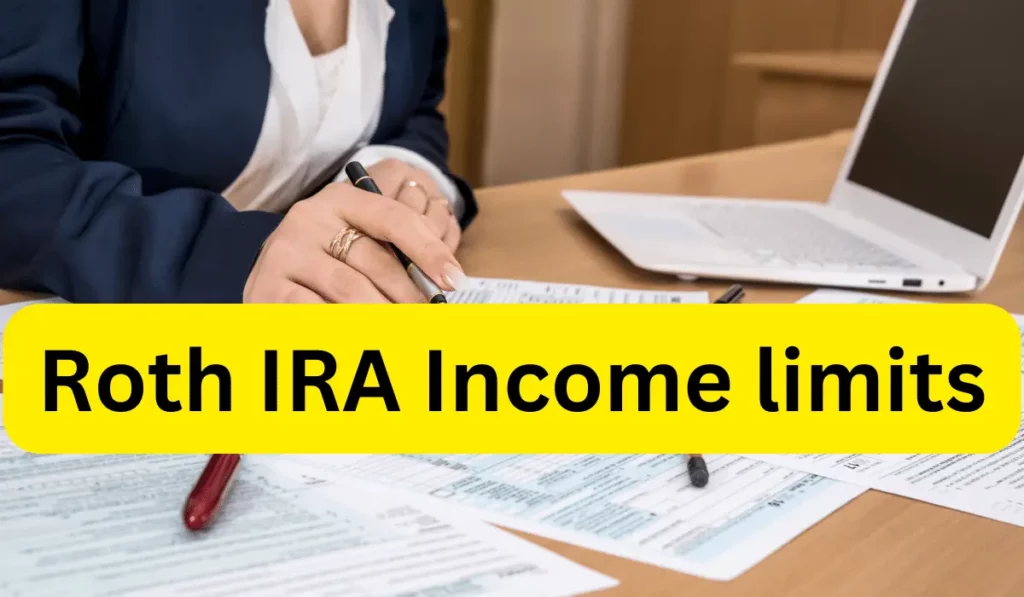A Roth IRA is a special retirement savings account where your contributions grow tax-free, and withdrawals in retirement are tax-free as well. Unlike other retirement accounts, taxes are paid on Roth IRA contributions upfront. However, the benefit lies in tax-free withdrawals during retirement, including investment earnings.
Rules govern who can contribute to Roth IRAs and how much. Early withdrawals may incur penalties, but proper utilization can significantly aid retirement savings, especially for individuals anticipating higher future taxes or seeking tax diversification in retirement.
Roth IRA Income limits 2024

To optimize your retirement strategy for 2024, understanding Roth IRA income limits is essential. Starting in 2024, contributions can be made through taxed income or by transferring funds from a 529 savings plan, contingent on income thresholds.
For the tax year 2024, eligibility to contribute to a Roth IRA varies based on filing status and income:
- Single filers need to earn under $161,000.
- Married couples filing jointly must have a Modified Adjusted Gross Income (MAGI) under $240,000.
Contribution limits for Tax Years 2023 and 2024 are as follows:
- Tax Year 2023: $6,500 (under 50) or $7,500 (50 and older)
- Tax Year 2024: $7,000 (under 50) or $8,000 (50 and older)
With the SECURE 2.0 Act effective from January 1st, 2024, funds from a 529 plan can be transferred to a Roth IRA, with traditional IRAs excluded. It’s advisable to consult a tax advisor for personalized guidance.
Roth IRA Contribution Limits for Tax Year 2024
| Single Filers (MAGI) | Married Filing Jointly (MAGI) | Maximum Contribution (Under 50) | Maximum Contribution (50 and Over) |
|---|---|---|---|
| under $146,000 | under $230,000 | $7,000 | $8,000 |
| $147,500 | $231,000 | $6,300 | $7,200 |
| $149,000 | $232,000 | $5,600 | $6,400 |
| $150,500 | $233,000 | $4,900 | $5,600 |
| $152,500 | $234,000 | $4,200 | $4,800 |
| $153,500 | $235,000 | $3,500 | $4,000 |
| $155,000 | $236,000 | $2,800 | $3,200 |
| $156,500 | $237,000 | $2,100 | $2,400 |
| $158,000 | $238,000 | $1,400 | $1,600 |
| $159,500 | $239,000 | $700 | $800 |
| $161,000 & over | $240,000 & over | $0 | $0 |
Simultaneous contributions to Traditional and Roth IRAs are permissible, subject to combined contribution limits and eligibility criteria.
For Tax Year 2024, the rule stipulates a maximum combined contribution of $7,000 (under 50) or $8,000 (50 and older).
Understanding these income limits is pivotal in securing a stable financial future. By planning and contributing judiciously, you can nurture your retirement savings and witness them flourish over time.
FAQs
Can I contribute to both Traditional and Roth IRAs simultaneously?
Yes, you can contribute to both types of IRAs, but there are combined contribution limits. For Tax Year 2024, the maximum combined contribution is $7,000 if you’re under 50 or $8,000 if you’re 50 or older.
What happens if I contribute more than the allowed limit to my Roth IRA?
Excess contributions may incur a 6% tax penalty. It’s crucial to monitor your contributions and ensure they stay within the allowable limits.
Are Roth IRA withdrawals taxed?
Qualified withdrawals from Roth IRAs are tax-free. However, non-qualified withdrawals may be subject to taxes and penalties, depending on the circumstances.
Can I convert my Traditional IRA to a Roth IRA?
Yes, you can convert funds from a Traditional IRA to a Roth IRA through a process called a Roth conversion. However, taxes will be due on the converted amount in the year of conversion.
I am the mind behind nammatech.com. I have an experience of more than 8 years in the digital marketing field. The idea behind starting this blog came when one of my friends find it difficult to fill out the application form. So, I came up with an idea to start a blog on this niche.

![Low-Income Housing for Disabled Adults, Seniors Near me [2024] housing for disabled adults](https://nammatech.com/wp-content/uploads/2023/03/Low-income-housing-for-disabled-with-no-waiting-list-near-me-USA1-150x150.webp)
![Low-Income Housing for Seniors near me in USA [2024] Low-income-housing-for-seniors](https://nammatech.com/wp-content/uploads/2023/03/Low-income-housing-for-seniors-150x150.webp)
![Low-income housing with no waiting list near me in [2024] Low-income housing with no waiting list near me](https://nammatech.com/wp-content/uploads/2023/03/Low-income-housing-with-no-waiting-list-near-me-150x150.webp)




